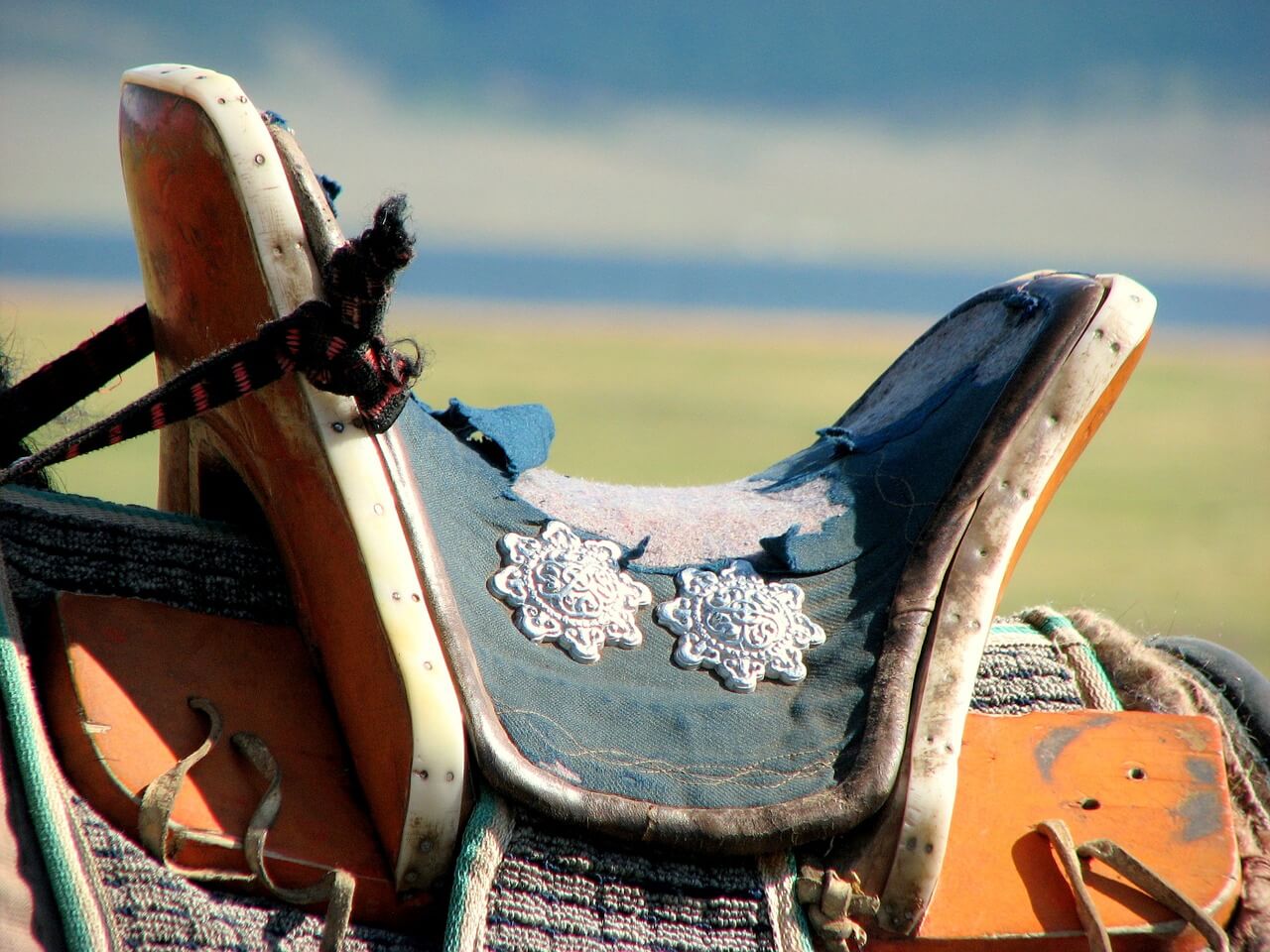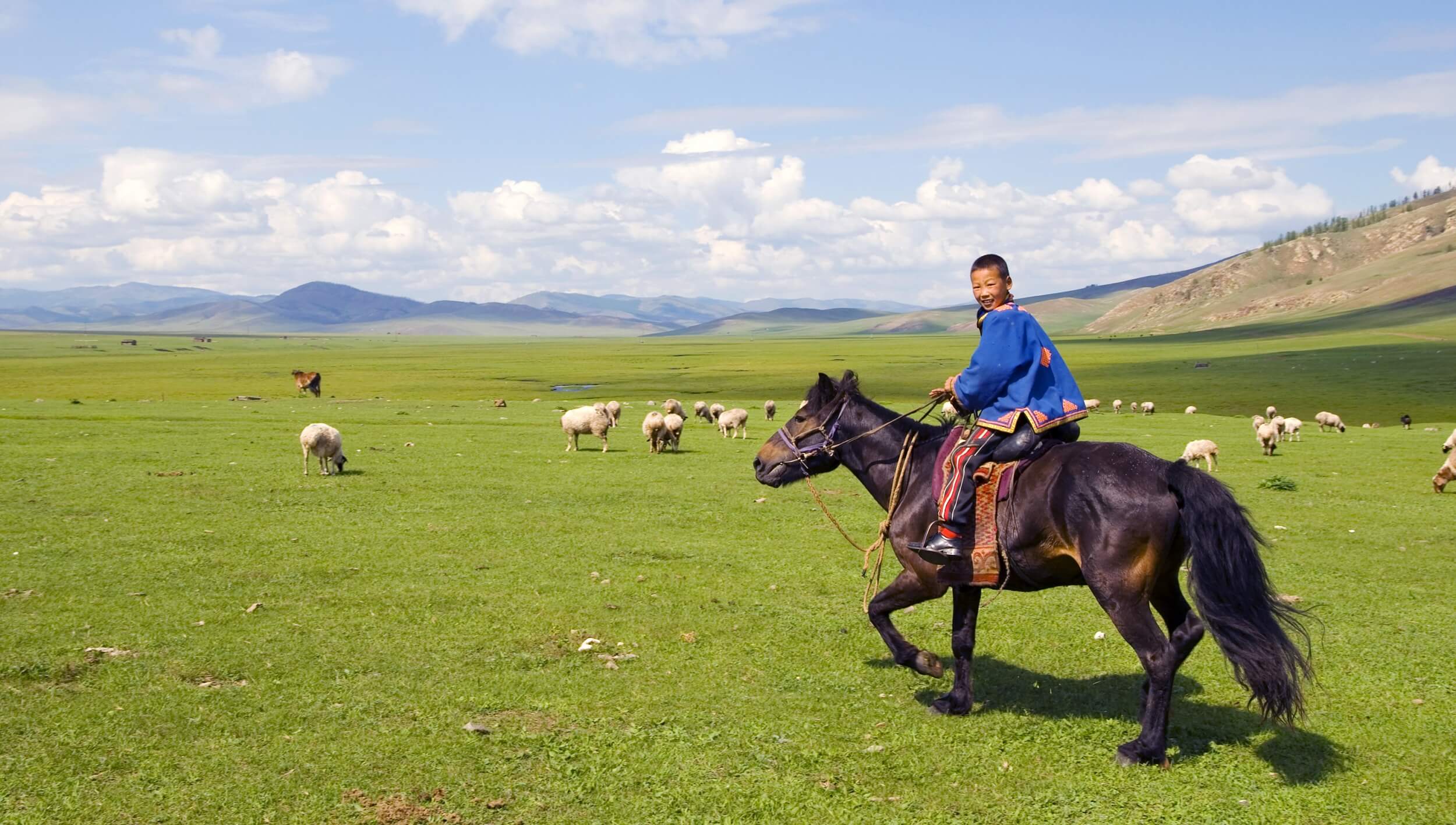Mt Altai: A Peak in the Altai Mountains
The Altai Mountains /Mt Altai/ are a mountain range in East and Central Asia, where Russia, China, Mongolia, and Kazakhstan come together. This region is renowned for its diverse wildlife and stunning, varied landscapes ranging from vast glaciers and rugged mountains to dense forests and wide grasslands.
The Altai highlands feature significant valleys and glacial formations made by rivers like the Katun and Bukhtarma. Located in southern Siberia, the Altai Mountains are also notable for their rich biodiversity.
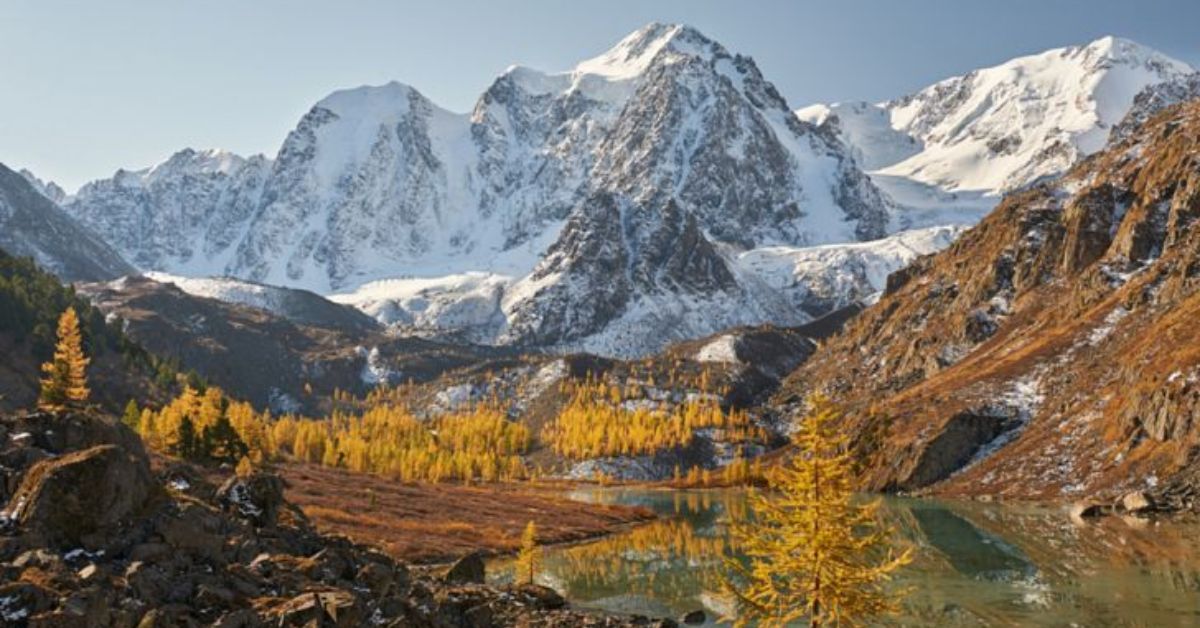
The Altai Mountains are particularly significant both ecologically and culturally. They are a UNESCO World Heritage Site, known for their natural beauty and the preservation of traditional nomadic cultures. The area showcases the most complete sequence of altitudinal vegetation zones in central Siberia, ranging from steppe to alpine vegetation.
The Altai Mountains of Siberia is geologically significant as the northernmost area affected by the tectonic collision of India into Asia. The Siberian Altai represents a region with various fault systems and unique rock types, highlighting its geological activity and historical events that shaped the landscape. The area is also rich in biodiversity, housing many species that are rare or endangered.
These mountains are popular for various outdoor activities, including hiking, mountain climbing, and exploring remote natural areas. The diverse topography includes numerous mountain ranges, such as the Sailughem and Katun.
The north-western slopes of the Sailughem Mountains are particularly challenging, featuring steep inclines and unique glacial formations. Western Mongolia, adjacent to the Altai Massif, is also a prime destination for adventure tourism, offering stunning natural features and geological landmarks.
The Altai Mountains are a key area for archaeological and ethnographic studies due to the preservation of ancient burial sites, petroglyphs, and artifacts.
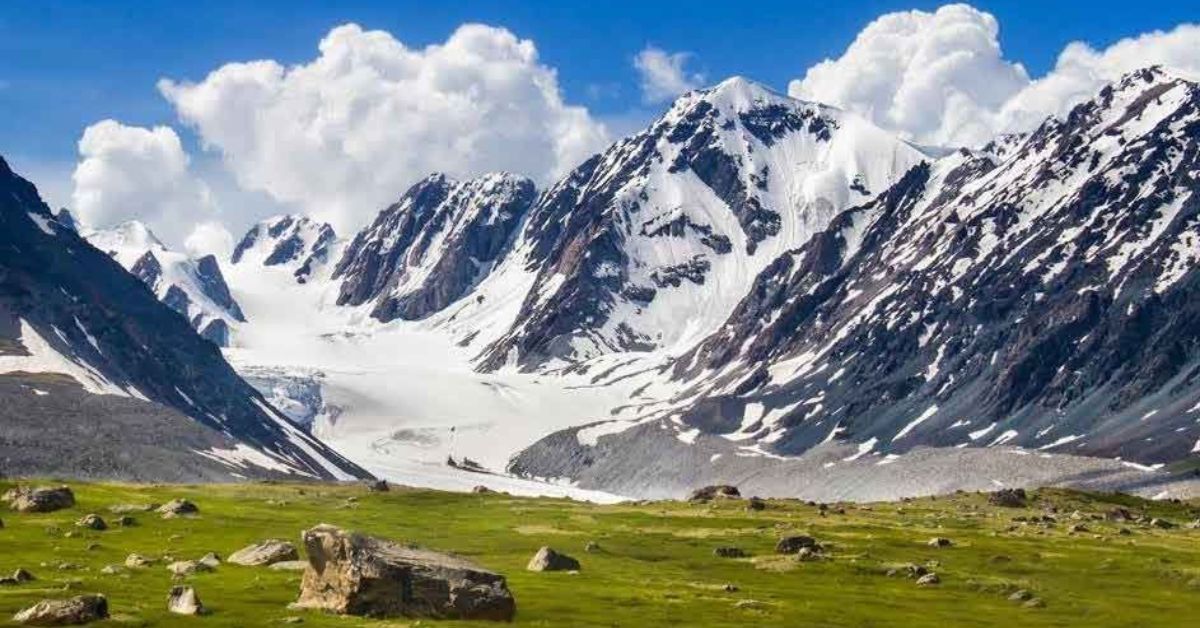
Geography and Geology Altai region
The Altai Mountains, a sprawling mountain chain in Central Asia, stretch approximately 1,200 miles (2,000 km) in a southeast-northwest direction.
This majestic range traverses the borders of China, Mongolia, Russia, and Kazakhstan, with the Altai proper nestled in the Altay Republic of Asian Russia, the eastern fringes of Kazakhstan, and the northern tip of China’s Xinjiang region.
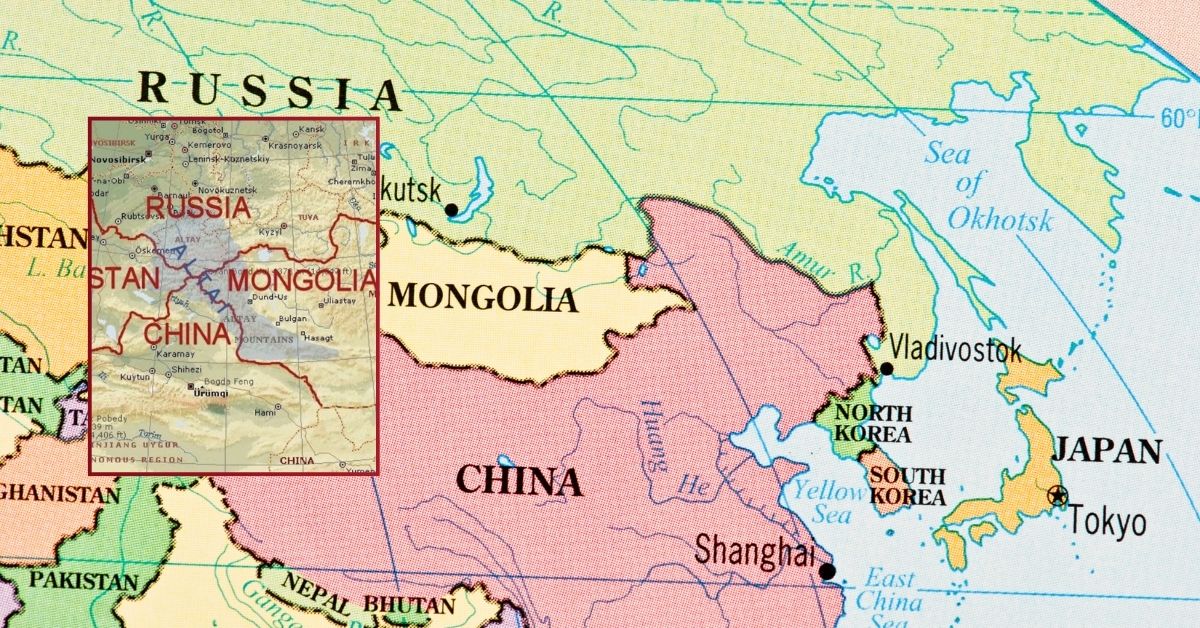
A belt of northern foothills acts as a natural divider, separating the Altai from the vast expanse of the West Siberian Plain.
The Mongolian Altai extends southeastward and then eastward from the towering Nayramadlïn (Hüyten) Peak, forming a natural border between Mongolia and China. Further south, the Gobi Altai begins about 300 miles (500 km) southwest of Ulaanbaatar, the capital of Mongolia.
The Altai Mountains owe their dramatic landscapes to the great orogenic upthrusts that occurred between 500 and 300 million years ago. Over time, these peaks were worn down into a peneplain, only to be thrust up again during the Quaternary Period, resulting in the awe-inspiring peaks we see today.
Earthquakes frequently rattle the region, a testament to the active fault zones beneath the Earth’s crust. The relentless forces of Quaternary glaciation have sculpted the mountains into their rugged forms, while river erosion has carved deep valleys and gorges.
The highest ridges of the contemporary Altai soar over 13,000 feet (4,000 meters) above sea level, with the Tabyn-Bogdo-Ola and Mönh Hayrhan Uul among the prominent peaks of the Mongolian Altai. The valleys, jagged and gorgelike, range from 1,600 to 6,600 feet (500 to 2,000 meters) in elevation, creating a dramatic and varied landscape.
Altai Mountain in Western Mongolia
If you are lucky enough to visit western Mongolia, add the Altai Mountains to your list of places to see. This mountain is absolutely stunning, and its history is just as fascinating. The Mongolian Altai is the largest mountain system in the country.
What can you see in Mongolian Altai
If you are in the Mongolian side of the Altai Mountains, there’s a lot to see and do. This region is rich in natural beauty, cultural heritage, and outdoor activities.
Western Mongolia, particularly around Tsambagarav Mountain and Yolt Valley, is a prime destination for adventure tourism, offering a unique blend of exploration and natural splendor. Here are some highlights:
- Tavan Bogd National Park: This park houses the highest peaks in Mongolia, including the towering Khüiten Peak. The area is known for its stunning glaciers and deep valleys. It’s a fantastic spot for trekking and mountain climbing.
- Petroglyphic Complexes: The Mongolian Altai is home to numerous petroglyphs, which are rock carvings created by ancient peoples. These artworks provide a fascinating glimpse into the history and beliefs of the region’s early inhabitants.
- Eagle Hunting: The practice of hunting with golden eagles is a significant part of the traditional culture in the Altai Mountain Range. Visitors can witness this ancient tradition, where Kazakh eagle hunters demonstrate their skills in a partnership with these magnificent birds.
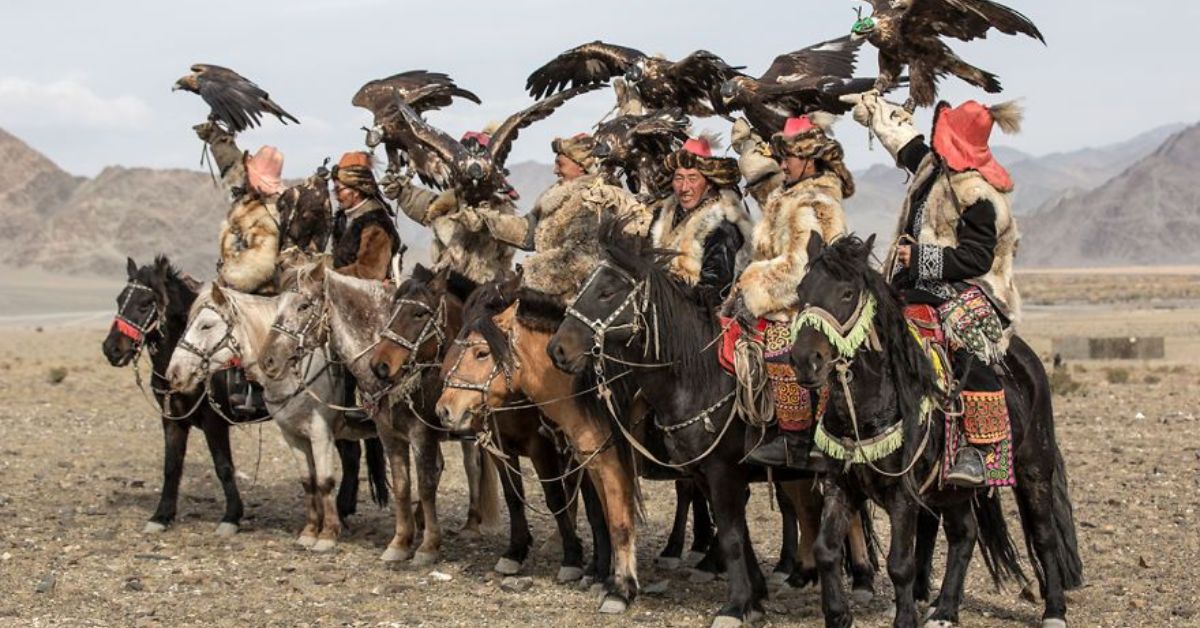
- Nomadic Culture: Experience the traditional nomadic lifestyle by staying in a ger (yurt), tasting local dishes like airag (fermented mare’s milk), and observing daily activities of herding and horsemanship.
- Lake Khoton and Lake Khurgan: These beautiful lakes in the Altai Tavan Bogd National Park are surrounded by stunning landscapes and are great for fishing, hiking, and simply enjoying the tranquility of nature.
- Wildlife Watching: The area is rich in wildlife, including argali sheep, ibex, red deer, and snow leopards. Bird watchers can also spot a variety of species, particularly near the lakes and rivers.
- Archaeological Sites: Explore archaeological sites where ancient artifacts and burial mounds have been discovered, providing insights into the histories of the various peoples who have inhabited the region.
The Altai Mountains in Mongolia offer a deeply enriching experience for those interested in nature, history, and traditional cultures. Whether you’re an adventurer, a nature lover, or a cultural enthusiast, there’s something captivating to discover.
Tavan Bogd Mountain is located in the Tavan Bogd National Park and is a dream travel destination for trekkers, mountaineers, wild nature lovers, and nature lovers. Not only nature, but the surrounding area is also home to various ethnic groups and historical sites. So here are few interesting facts about the Tavan Bogd Mountain
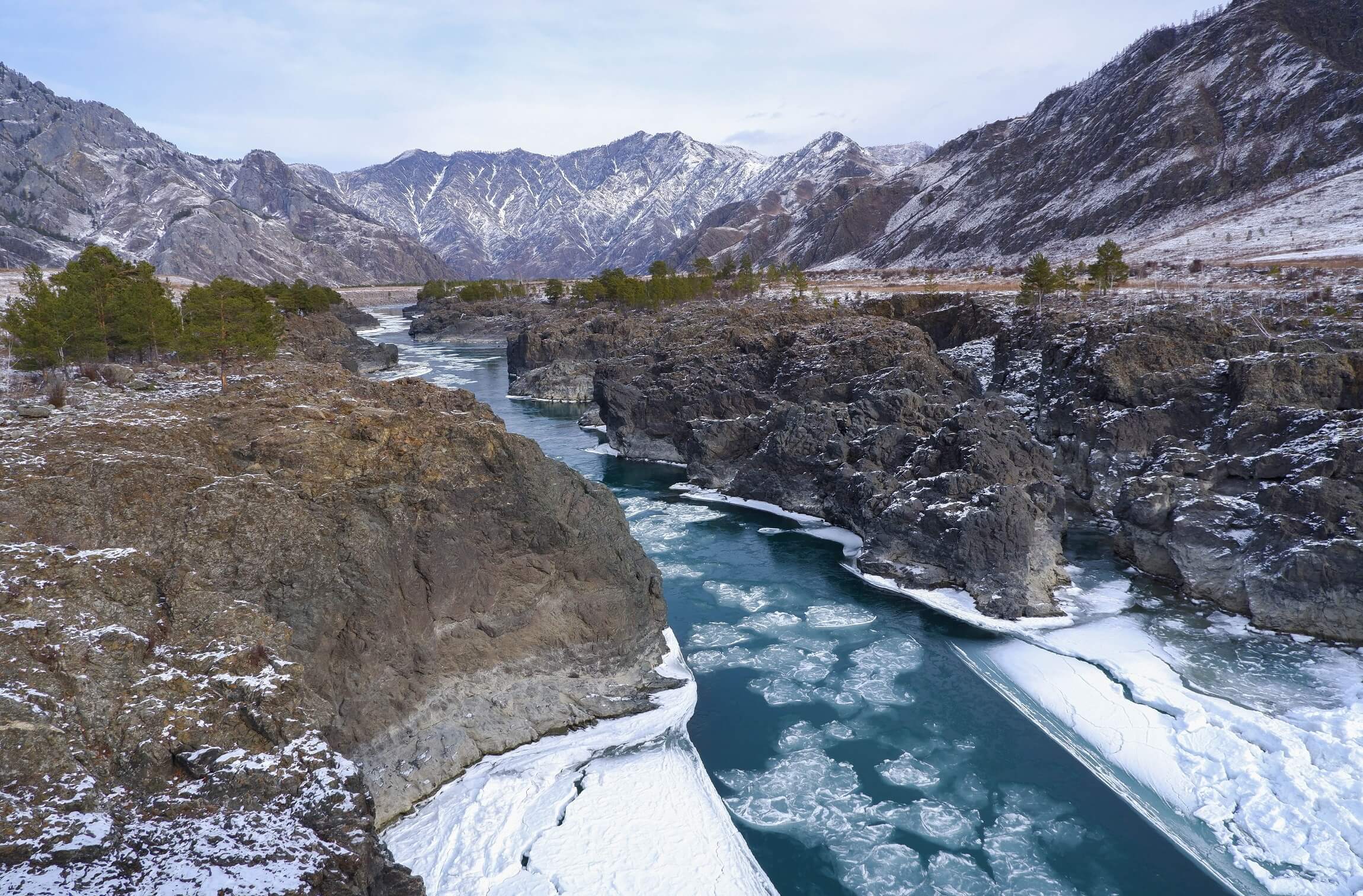
#Fact 1 – Location of Altai Tavan Bogd National Park
The Altai Tavan Bogd National Park (Altai five saints nature complex) is a national park in Bayan-Ölgii Province, Mongolia. The park encompasses the Mongolian side of the Tavan Bogd massif, which is split by the Altai Mountains’ three boundary lines with Russia and China.
The Altai highlands feature significant valleys and glacial formations created by rivers like the Katun and Bukhtarma, showcasing picturesque natural scenery and ecological significance.
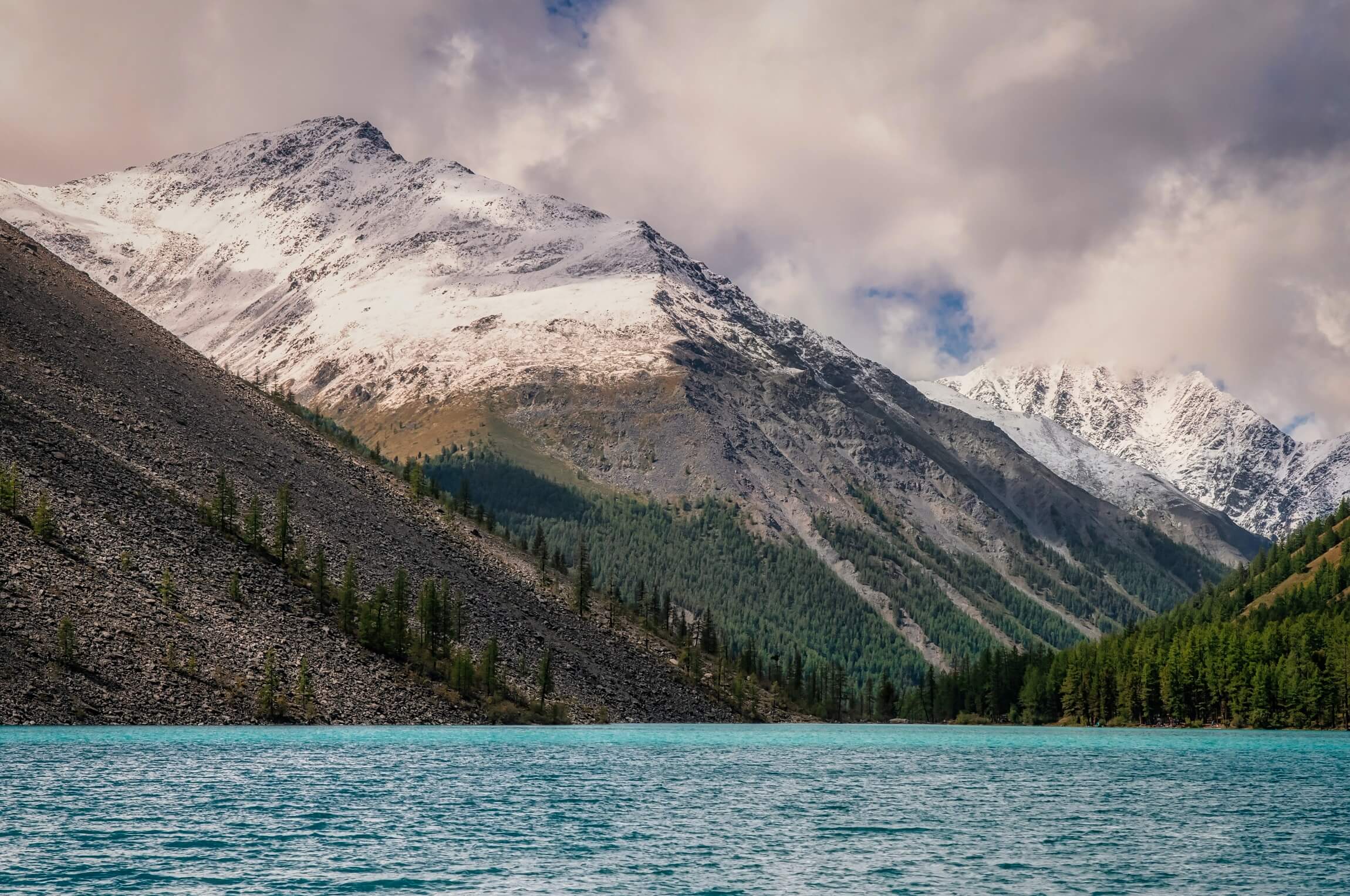
The quickest way to get from Ulaanbaatar to the national park is by plane, but if you want to see more of the countryside and have a more adventure, then driving is the better option. The north western slopes of the Sailughem Mountains in the Altai Mountain Range are known for their steep and challenging terrain, with unique formations and glaciers.
You can either drive all the way there (1920 km), or fly to Ulgii town first and then drive 270 km from there. Keep in mind that the roads between Ulgii town and Altai Tavan Bogd Mountain are rough so it will take longer (560 km on both ways).
#Fact 2 – 5 Saint peaks of Altai Tavan Bogd Mountain Range
The Golden Mountains Tavan Bogd massif has five main peaks, which are considered as the five sacred peaks “Five Saints”. They are:
- the Khuiten peak (Mongolia’s highest point at 4374 meters above the sea level) The highest peak of Altai Mountain.
- Nairamdal or Friendship peak the second highest point (4082 meters)
- Malchin peak or Herder peak (4037 meters above sea level)
- Burged or Eagle peak (4068 meters )
- Ulgii peak (4050 meters)
These peaks are part of the diverse Highland ranges within the Altai Tavan Bogd Mountain, which include prominent ranges such as the Sailughem and Katun, known for their unique features and ecological significance.
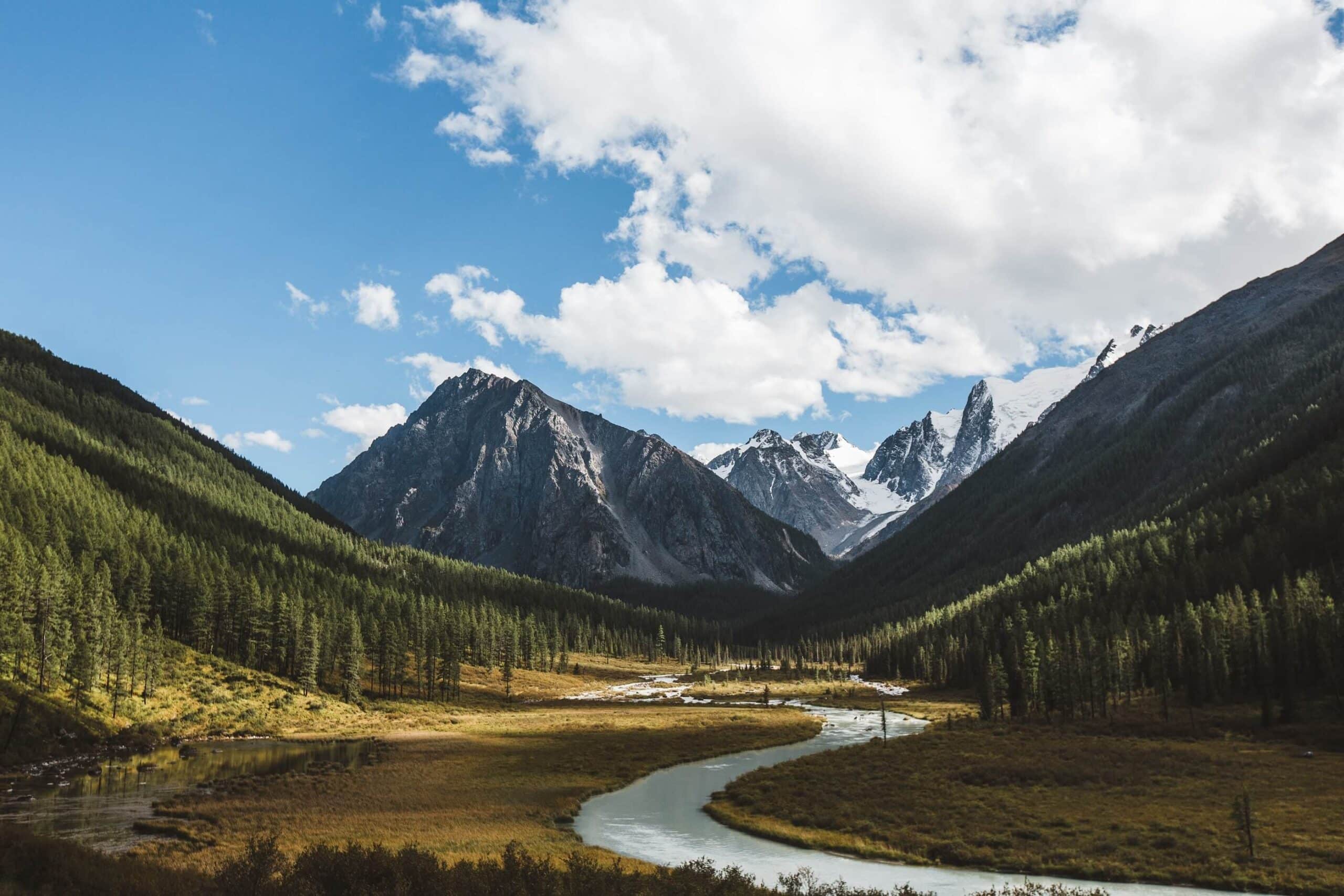
The Local People have nicknamed these five summits “Bogd” to show their reverence and hence the name Altai Tavan (Five) Bogd. The word Bogd signifies someone with extensive knowledge or great compassion, which is why it translates to English as “Saint”. So we called it Altai Tavan Bogd Uul.
#Fact 3 – Climate of the Altai Tavan Bogd Mountain/ Why you can see the biggest glacier there?
It usually snows from October until the end of May, with the rainiest season being in July and August. The average temperature during summer days is 16-25°C, while nights are 7-13°C on average.
The Altai Mountain Range is renowned for its diverse ecosystems, showcasing the most complete sequence of altitudinal vegetation zones in central Siberia, ranging from steppe to alpine vegetation. This ecological diversity is crucial for the conservation of endangered species.
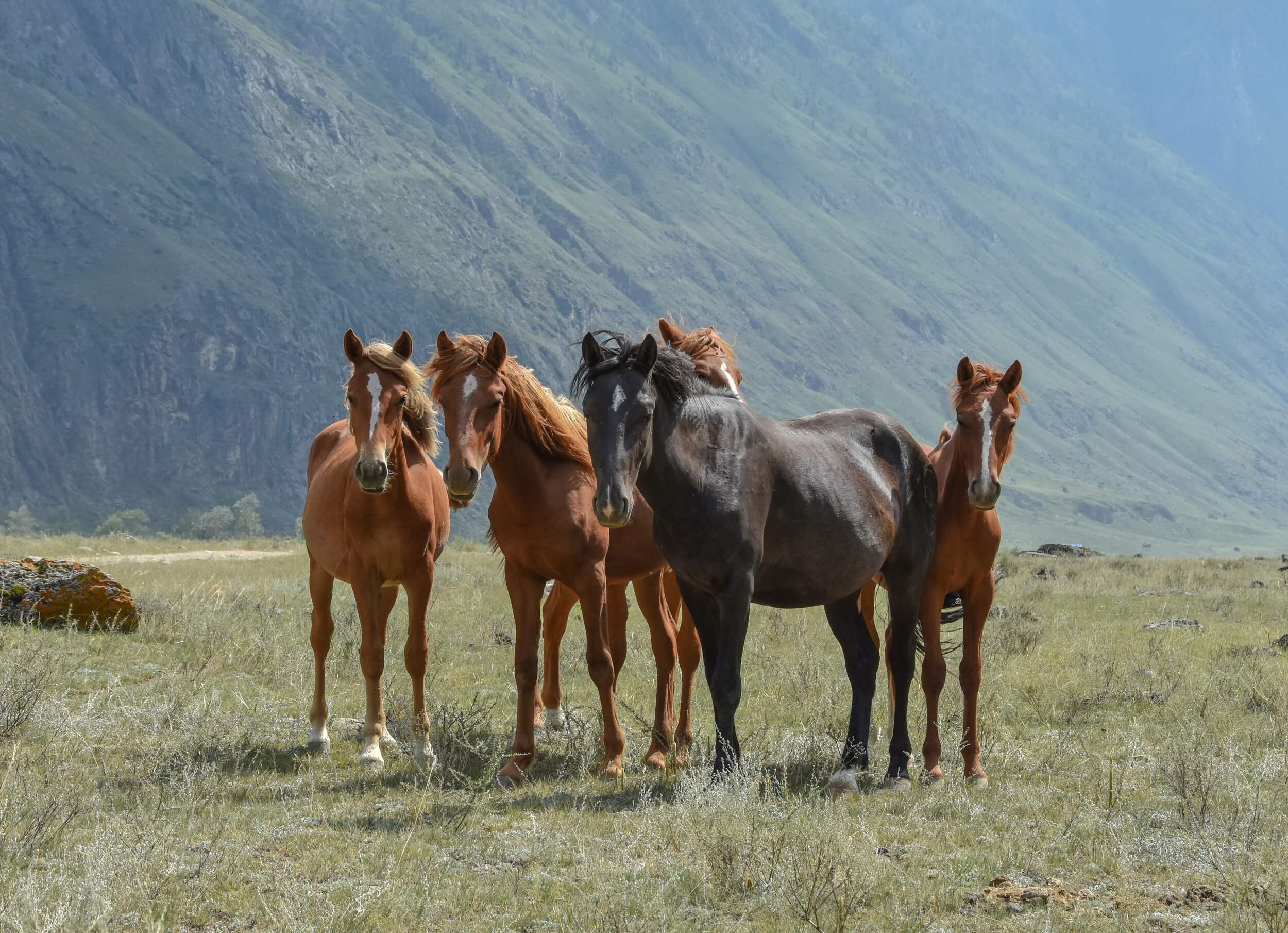
The Tavan Bogd massif is home to the largest glacier system in Mongolia (and possibly Central Asia), which is called the Potanin Glacier. It stretches about 14 kilometres and located through in the Altai Tavan Bogd mountain in Altai Mountain range. The glacier is named after explorer Grigory Potanin.
Unfortunately, like with other glaciers around the world, the Potanin Glacier is gradually shrinking. It shrank by about 90 meters in a 6-year period of monitoring.
#Fact 4 – Things you can do in Altai Tavan Bogd
Many tourists come to Altai Tavan Bogd Mountain for the famous Potanin Glacier and Khuiten peak- the tallest mountain in Mongolia. If you’re an experienced adventurer looking for a new challenge, you may attempt to may peaks of Altai tavan bogd.
If a 36-37 kilometer trek doesn’t seem like your cup of tea, don’t worry! Horseback riding is one of the best way to explore deep in this large park instead. The views of the snowcapped mountains in Mongolia, Russia, and China will be sure to take your breath away.
The Altai Mountain Range is located in central Siberia and is known for its unique altitudinal vegetation zones, ranging from steppe to alpine vegetation. The Altai Mountains, situated in southern Siberia, are a major mountain range with diverse ecology and endangered species.
The Russian Altai is geologically significant as the northernmost area affected by the tectonic collision of India into Asia.
Another fascinating sight is the Shiveet Khairkhan rock drawing in the Altai Tavan Bogd Mountain. The rock carvings cover a wide range of styles, with some dating back to the Bronze Age and others from the Turkic period of V to VIII AD. UNESCO has included the Shiveet Khairkan rock drawing in its list of Natural Heritage Site.
The area is home to creatures like the Altai Argali sheep, Ibex, Red deer, Beech marten, Moose, Snow cock and Golden eagle. With a touch of luck clients might catch glimpse of wild sheep, ibex and snow leopard on our trekking tour.
On other hand, during special interest tours one can observe wide variety of wildlife in their natural surroundings. Additionally, the golden eagles, endangered species of snow leopards are rare animals.
On your way from Ulgii town to Altai Tavan Bogd Mountain, you will see the Tsagaan Gol/White River. These Mountain Rivers, is the main valley flowing from the Tavan Bogd Mountains to Tsengel village and the center section of the UNESCO World Heritage Site.
The inhabitants of the valley are Tuvan, a Mongol tribe renowned for their throat singing and unique arts.
You might interested other Mongolian hidden gems similar as Mt Altai, read more: Mongolian adventure: Top Must-Visit Places in Mongolia for 2025
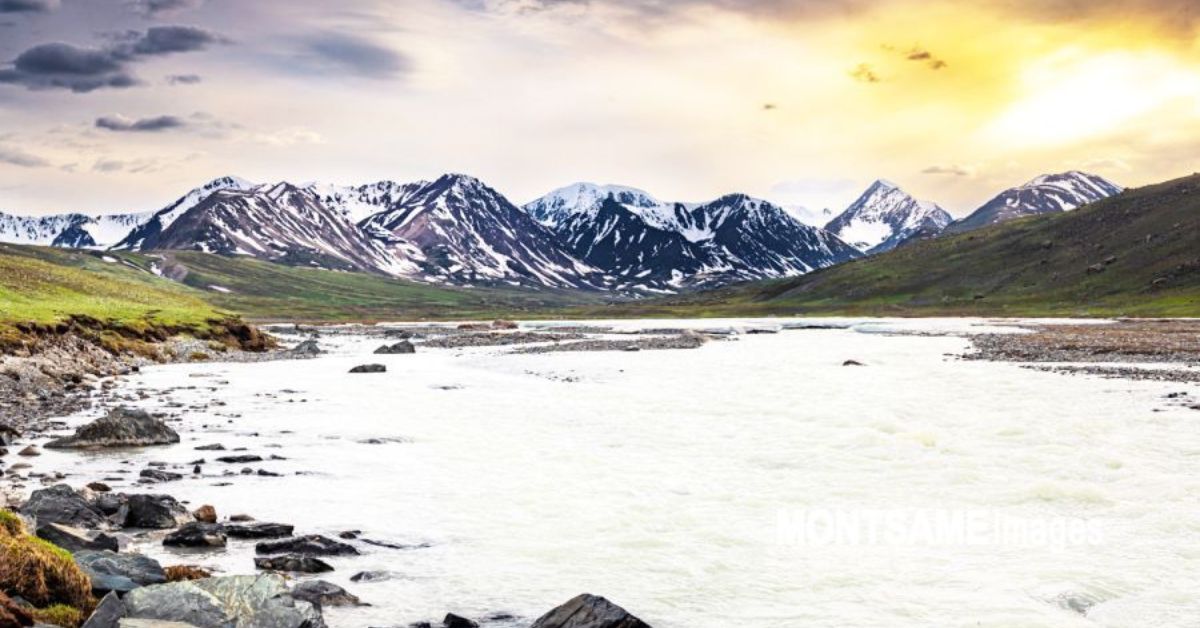
Biodiversity and Ecology
The Altai Mountain Range stands as a beacon of biodiversity in northern Asia, harboring a unique collection of montane plant and animal species. This rich biodiversity is a result of the region’s distinct geographical location and climate, making it a critical area for conservation efforts.
Many species found here are rare and endemic, underscoring the ecological significance of the Altai Mountains.
The region’s vegetation can be categorized into four distinct zones: mountain subdesert, mountain steppe, mountain forest, and alpine regions. The Alpine desert zone is typically found on the lower slopes and in the hollows of the Mongolian and Gobi Altai.
Rising to about 2,000 feet (600 meters) in the north and up to 6,600 feet (2,000 meters) in the south and east, the mountain steppe zone is characterized by meadows and mixed-grass steppes, featuring sod grasses, forb species, and steppe shrubs.
The mountain forest zone, most characteristic of the Altai proper, covers about seven-tenths of the territory. These forests ascend to elevations of 6,600 feet (2,000 meters) but can climb as high as 8,000 feet (2,400 meters) on the drier slopes of the central and eastern Altai.
The highest ridges are home to subalpine vegetation, a testament to the region’s diverse ecological zones.
Animal life in the Altai follows the patterns of vegetation. The mountainous semideserts and steppes are populated by various rodents, while the skies are patrolled by majestic birds of prey, including eagles, hawks, and kestrels. This intricate web of life makes the Altai Mountain Range a vital area for ecological study and conservation.
Human History and Culture
The Altai region is steeped in history, with human presence dating back thousands of years. This area is a treasure trove of archaeological sites, including the ancient city of Kharakhot. Traditional Mongolian villages dot the Altai Mountain region, offering a window into the country’s past and its rich cultural tapestry.
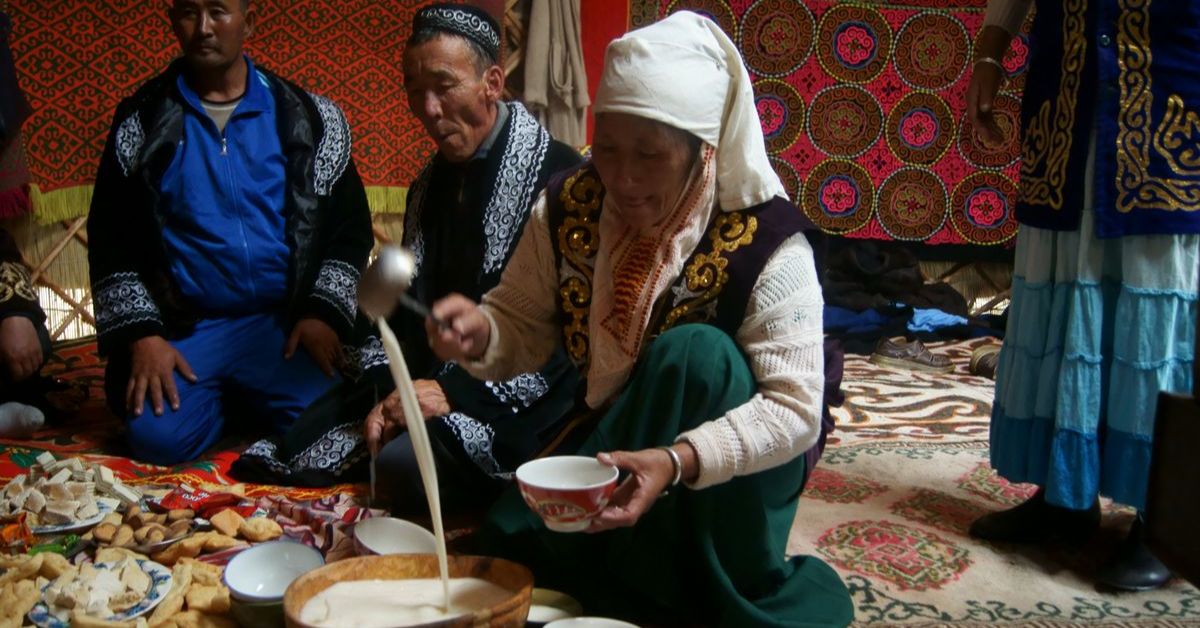
The people of the Altai Mountains have a profound connection to their land and animals. Nomads in this region live in one of Mongolia’s most remote and rugged areas, enduring long, freezing winters and short, mild summers.
These nomads are primarily herders, relying on their livestock for sustenance. Horse breeding is a common practice, with cattle and yaks being the mainstays in the north, while the drier southern regions are better suited for sheep, goats, and camels.
The Altai region holds immense cultural significance, with the Altai Tavan Bogd National Park being a highlight for visitors. The park offers a unique opportunity to experience the Mongolian nomadic culture firsthand.
Visitors can trek on horseback and visit the families of nomadic eagle hunters, gaining insight into their traditional way of life. This blend of natural beauty and cultural heritage makes the Altai Mountains a captivating destination for those seeking to explore the heart of Mongolia.
Bonus Fact
The Altai Tavan Bogd National Park serves as the primary setting of Chorh-Gom Prison in the Kung Fu Panda franchise. In the DreamWorks Animation film, the park is depicted as an inescapable prison.
However, in actuality, the Tavan Bogd National Park is a popular tourist destination and one of the most beautiful places in Mongolia. The Altai Ridge of Siberia marks the northernmost area impacted by the tectonic collision of India into central Asia, featuring unique rock types and various fault systems that highlight its geological activity.
Hi, I’m Bayanbat. I grew up in Mongolia and have been living there my whole life. I create Correctmongolia web that helps people understand Mongolia better.
Do you have any questions or comments about the Altai Mountains? Let us know in the comments below!
Related Content:
Share to Public


